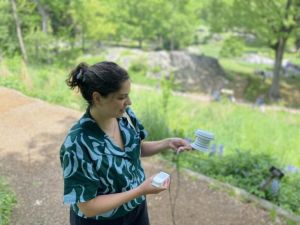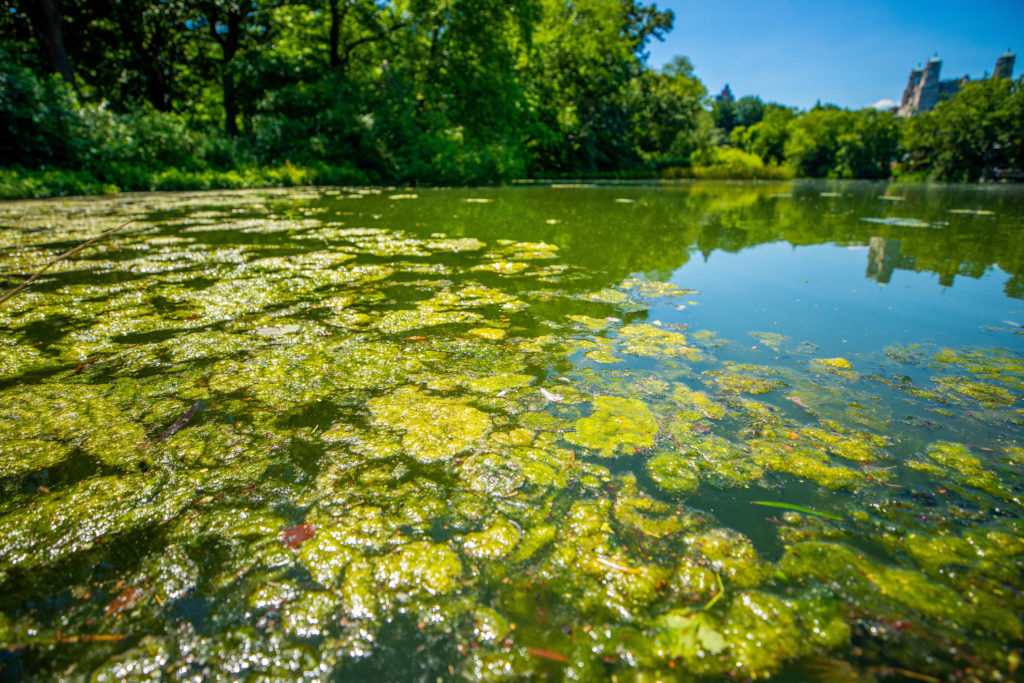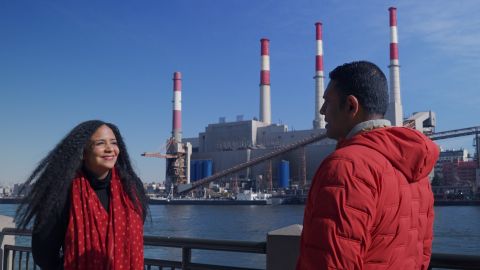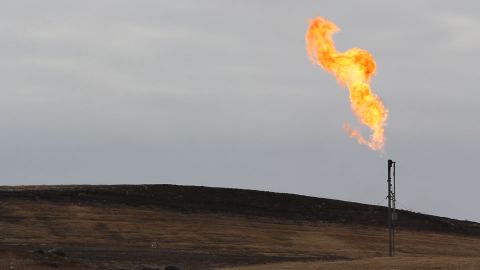Central Park’s Climate Lab Is a Window Into the Future of Urban Green Spaces
By Danielle Renwick
When Hurricane Ida dumped more than three inches of rain on Central Park in a single hour, the National Oceanic and Atmospheric Administration (NOAA) called it a “1-in-500-year rainfall event.”
The downpour broke the Park’s previous rainfall record, set just 11 days earlier. It damaged scores of trees, flooded the Loeb Boathouse, transformed the area surrounding Bethesda Fountain into a massive pool and rendered much of the Park inaccessible for days. It illustrated the vulnerability of the city’s parks to the effects of climate change—and how little is understood about the relationship between parks and shifts in weather patterns.
“We have been witnessing the increasing impacts of climate change throughout Central Park for some time now,” said Michelle Mueller Gamez, manager of climate change research at the nonprofit Central Park Conservancy. These impacts include harmful algae blooms during the summer, increasingly intense heat waves, and extreme rainfall resulting in flooding, she said. “The damage that’s caused to Central Park during these extreme events makes it increasingly harder for our staff to maintain and care for all 843 acres.”
Earlier this year the Central Park Conservancy, together with the Yale School of the Environment and Natural Areas Conservancy, launched the Central Park Climate Lab. The goal, Mueller Gamez said, is to collect data on ways in which the Park is changing so its custodians can care for it accordingly. “Other urban parks are facing similar challenges,” she said. “We hope our findings can be a resource to exchange and share information with other urban landscapes.”
More than half the world’s people now live in cities, and parks provide their primary nature experience. In New York, half the population reports that their only exposure to the natural environment is through the city’s parks. Parks help keep residents cool (and happy); their soils absorb rainwater and runoff, and their trees improve air quality and capture carbon dioxide.
But many parks are in trouble. Between 2001 and 2017, the U.S. lost more than 24 million acres—the equivalent of nine Grand Canyons—of parkland and other natural areas to land conversion. Many parks, including Central Park, have experienced tree die-offs due to such invasive species as the emerald ash borer, porcelain berry, lesser celandine and Japanese knotweed, all of which thrive in warmer weather. U.S. cities lose millions of trees each year.
“The health of the Park and its forest are at risk,” said Clara Pretziger, deputy director of conservation science at the Natural Areas Conservancy. “If it’s hotter, if the lawn is flooding, if the lake itself has algal blooms, it will just be a less pleasant place to visit.”
Pretziger studies the ways urban forests soak up carbon. In a paper published this year, she showed that urban forests and rural forests store carbon at similar rates. “I think natural areas as a type of parkland are undervalued in their contribution to climate change mitigation and approach to adaptation,” she said.
But urban forests are increasingly at risk from pests, flooding, storms, drought and high temperatures. In 2012, Superstorm Sandy, whose destructive force was intensified by climate change, damaged or uprooted some 800 trees in Central Park. “Some of those trees have been there for 300, 400 years. You have these large oak trees—they are really magical and they make the park beautiful—and if they topple over they’ll take a generation to [replace],” Pretziger said.
Central Park contains a multitude of microclimates—lawns, natural areas, wetlands, woodlands, meadows. Caring for the entire Park means understanding the different stresses affecting each area.
“We actually don’t know what the changes in rainfall and temperature [have been throughout] the Park,” said Karen Seto, a professor of geography and urbanization science at the Yale School of the Environment. She said most temperature readings in the Park don’t account for variability in climate conditions; a shady wooded area can be expected to be cooler than an open meadow.
This spring, in one of the center’s first experiments, Seto and a team of scientists took light readings throughout the Park, using a spectroradiometer—a tool that can help scientists assess the health of a plant—to collect data on the Park’s varied microclimates. Using satellite data, the team will monitor changes to the Park’s flora over a period of years.

Climate Lab research manager Michelle Mueller Gamez displays one of the park’s new thermal sensors. Credit: Danielle Renwick
Mueller Gamez and her team are collecting data on temperature variances throughout the Park by installing solar-powered sensors in the lawns, wooded areas, playgrounds and meadows. She said this information will help planners in considering ways to keep New Yorkers cool during increasingly frequent and intense heat waves.
“The idea is to understand the benefits of natural and forested areas and how we can enhance them if we understand we’re getting more cooling benefits,” said Mueller Gamez. It is understood that shaded areas are naturally cooler on hot days. The sensors will quantify just how much cooler.
Parks don’t just keep cities cooler and improve residents’ well-being; people who spend time in parks and nature are more likely to engage in “environmentally friendly” behavior.





